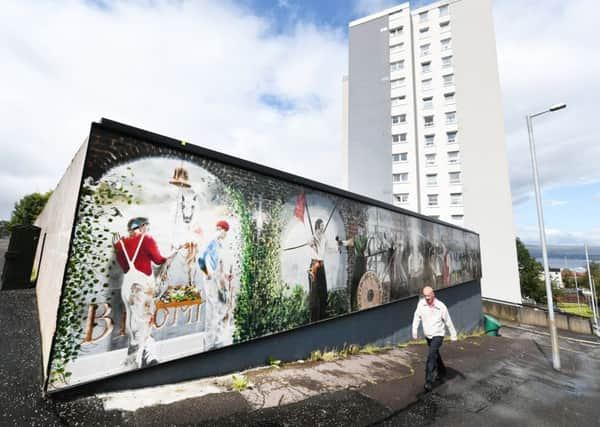Letters: Tenants’ input vital to the success of social housing


I enjoyed the humanity in Dani Garavelli’s Insight article in last week’s paper. It was refreshing to see residents at the centre of a piece on social housing. In the article Shelter talks of a New Deal for social housing, however it wasn’t clear what their new deal is. While Garavelli wrote about resident ownership, a sense of community, and the creativity of tenants, Shelter talked only of tenant involvement in the redesign and location of bricks and mortar.
The history of social housing in the article was interesting, however I would like to have read more on the recent history of housing associations in Scotland.
Advertisement
Hide AdAdvertisement
Hide AdToday’s housing associations would have us believe they have their roots in the struggle of tenants in the likes of Dennistoun in the sixties, who successfully resisted the prevailing trend to flatten their homes and move them to Easterhouse. In fact, most housing associations today were established as suitable vehicles to deliver the agenda of central government.
In the early nineties a Tory government used housing associations as Trojan horses to introduce private finance into the the most neglected housing schemes. Places where tenants did not qualify for a mortgage and the housing was so rundown no one wanted to exercise their right to buy.
Bellsmyre in Dumbarton was one of the first pilots for this policy. Scottish Homes tenants were sold the housing association idea on the premise that they would have local control. Older heads didn’t believe it, but went along with it as the only way to repair the damage of the eighties. We’ve no money to refurbish your homes, tenants were told, however, if you form a housing association we’ll sell you your homes for a pound per street and you’ll qualify for a Housing Association Grant (HAG). HAG only covered half the cost of the regeneration but the Clydesdale were only too happy to give the housing association a mortgage for the other half.
Our street was the first to be refurbished and people were very happy with the result. It was as if we had moved to a new neighbourhood without actually moving. However, the rest of the scheme never saw the same level of improvements. Once we had taken ownership of the housing Scottish Homes lost interest, and Bellsmyre Housing Association was in too deep to go back. We soon realised we didn’t have as much control as we were promised. Through legislation and finance we were easy to control. Using this model Scottish Homes gave away all their public housing and banks sold many more lucrative mortgages than they thought possible.
Pleased with this outcome central government of all political persuasions moved onto council housing. Before long the likes of Glasgow Housing Association and River Clyde Homes were born.
The modern model of housing associations may be good for the regeneration of bricks and mortar. They are also quite good at service delivery, as if I was a customer rather than a resident. However, the model doesn’t encourage very much overall in the way of ownership, a sense of community or the creative power of tenants.
For all the rhetoric around tenant involvement, a mature debate needs to recognise that community control hasn’t ever been a real part of the history of social housing. In the noughties, I worked in Greenock for a community project called Phoenix, then I worked in Glasgow as a community worker for a housing association. This was pre austerity, and although better funded than now, it was still an uphill struggle with limited resources.
Tenant Participation was given some kind of priority in the first housing bill passed by Hollyrood in the Housing (Scotland) Act 2001. Twenty years on it hasn’t progressed much beyond a tick box exercise and a PR tool. Any mature debate needs to look at why there has been so little progress. Some close scrutiny of The Scottish Housing Regulator (SHR) could inform the debate.
Advertisement
Hide AdAdvertisement
Hide AdSHR claims to represent the best interest of tenants. However, they are also tasked with ensuring housing associations are set up to attract private finance. The regeneration of Broomhill, for example, like the regeneration of Bellsmyre needed the support of private finance. The twin objectives of SHR need to be acknowledged and new structures introduced that can cope when financiers needs diverge from community needs.
It’s in all our interests to insist on meaningful tenant participation and community control. How many readers, I wonder, look at the momentum to build more social housing nowadays and are reminded of projects in the past that proved in hindsight to be a waste of public money. A common factor in all the failed public housing projects was the suppression of tenants knowledge and experience. How better our public housing infrastructure might be today if more tenants, like the ones in Dennistoun, had been listened to in the past.
Tommy Lusk, Dumbarton